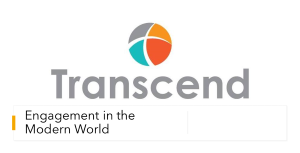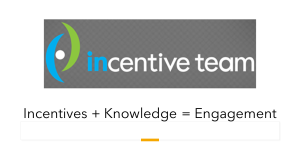CFO Corner: The Dirty Secret of Business Vast Money Likely Wasted on Engagement Efforts
.jpeg) What’s the return on investment on the money spent on human engagement tactics? That is a key question that both CFOs and CEOs need to ask. The sad fact is that most assume that measurement is impossible and treat stakeholder engagement as a sunk cost. It’s not just another version of the concept that we hope half of our stakeholder engagement efforts are working, we don’t know which half. The danger is that we’re not measuring the damage we’re doing with half-baked, reactive engagement measures.
What’s the return on investment on the money spent on human engagement tactics? That is a key question that both CFOs and CEOs need to ask. The sad fact is that most assume that measurement is impossible and treat stakeholder engagement as a sunk cost. It’s not just another version of the concept that we hope half of our stakeholder engagement efforts are working, we don’t know which half. The danger is that we’re not measuring the damage we’re doing with half-baked, reactive engagement measures.By Nick Shepherd
The Failure to Measure Enhances Risks
The Need for a Strategic and Systematic Approach to Measurement
The Tools of Human Capital Measurement Exist
Allocating financial resources is one of the hardest challenges that leaders face. Understanding and measuring the investment and outcomes related to the conditions that foster employee engagement has never been more important. There is a proven correlation between organizational performance and employee engagement, but if senior managers are not assessing the return on investment of their investments in building engagement, they are investing in the dark. Worse yet, while many major tech companies begin to make significant changes in work-from-home and other Covid-era policies, how many have firm human capital metrics in place to track the impact of these changes on retention, productivity, quality, willingness-to-refer, etc.?
Scientific research on employee engagement has demonstrated the important link between conditions in the workplace, human engagement, and performance but basic questions remain. Beyond the basic question of what makes for effective front-line management, are we measuring the impact of such tools as incentive, rewards, recognition, motivational events, or for that matter learning, diversity, equity, and inclusion, safety and wellness? Anecdotal evidence is strong that there remains insufficient rigor in the measurement of most stakeholder engagement tactics, particularly in comparison with capital investments or acquisitions. One reason may be the incorrect assumption they cannot be measured or because of the natural inclination of any managers with budgets to avoid deep scrutiny from financial management.
The Failure to Measure Enhances Risks
It’s one thing to fail to measure the positive impact of engagement processes; it’s another to overlook the potential consequences of poor engagement design or implementation. Many organizations, most notably Wells Fargo, have suffered enormous losses by setting up incentive programs that in effect encouraged employees to act against the best interests of the customer and the company.
One could argue that stakeholder engagement is at the same stage as quality management in manufacturing. Companies simply built high levels of defects into their business models until the Japanese employed total quality management strategies that transformed market shares in the automotive, electronics, appliances, and other markets that’s never been recovered. Based on my decades of experience in financial management, the same is true of people management today.
Multiple questions arise when it comes to all the tactics companies employ to motivate sales or non-sales employees or independent contracts. Are tools such as incentives, rewards, and recognition, etc. creating behavior that leverages greater collective engagement or are they focused heavily on individual performance that can in some cases lead to shortcuts or unethical behavior? Are we investing adequately in tactics such as defining, sustaining, and measuring job design, professional development, workplace cultures, turnover, referrals, and performance, safety, physical and mental health, especially the special role of everyone in a leadership position? What macro measures are being used to measure the overall impact of these efforts?
The Need for a Strategic and Systematic Approach to Measurement
The fundamental issue is that most CEOs sign off on large stakeholder engagement expenditures with little clear measurement, often in an active, reactive manner, in which various efforts are siloed rather than aligned to achieve a common purpose with clear measures.
Clearly incentives work well to drive individual performance; they are a foundation of human motivation. Yet pursuit of individual goals sometimes conflicts with the cooperation and collaboration necessary for an effective group work environment. Is the organization failing to see the negative impacts on perceived unfairness – a demotivator when individuals rather than the workgroup receive credit? Is the ROI measuring only the observed success, not the tradeoffs being made to achieve it?
CEOs and CFOs need to closely look at group incentives such as gain-, or profit-sharing, or employee ownership, that have been used successfully by many organizations to drive group engagement while reducing the upward spiral of fixed costs. Is there a good balance between individual and group incentives?
It has been said that employees leave relationships – not organizations. Is employee turnover being impacted by poor relationships? How healthy and productive are these internal relationships, especially between departments? Effective leaders build effective relationships. Are investments in leadership focusing on management of “task” oriented development, focused on improving levels of performance and productivity? Is job design being carefully considered to make work more fulfilling and productive?
Levels of employee engagement are significantly affected by the quality and behavior of those in leadership roles. Is the ROI on anything around leadership development even known and measured?
The Tools of Human Capital Measurement Exist
Finally, it’s important to dispel the notion that stakeholder engagement efforts can’t be measured. In fact, with technologies such as Enterprise Engagement platforms, organizations can clearly track the correlation between how people feel, what they know, what they do, whether they stay or refer others, etc., and much more.
In addition, multiple tools exist to measure the impact of any stakeholder engagement effort, including:
Master Measurement Model of Performance
This timeless report from the American Productivity & Quality Institute demonstrates how total quality management systems can be applied to people engagement in a highly measurable manner.
The ROI Institute
This organization has created a highly effective method for evaluating the return on investment of almost any type of endeavor in both qualitative and quantitative ways.
Humanizing Human Capital
A thorough guide to the principles of measuring the impact of human capital on organizational success; one of the five foundational books of the Enterprise Engagement Alliance enterprise engagement curriculum. This include information on human capital metrics that can be utilized to better understand the impact of human resources decisions on the business.
Subscribe to ESM's weekly newsletter.
 Profit From the “S” of Environmental, Social, Governance (ESG)
Profit From the “S” of Environmental, Social, Governance (ESG)Through education, media, business development, advisory services, and outreach, the Enterprise Engagement Alliance supports boards, business analysts, the C-suite, management in finance, marketing, sales, human resources and operations, etc., educators, students and engagement solution providers seeking a competitive advantage by implementing a strategic and systematic approach to stakeholder engagement across the enterprise. Click here for details on all EEA and RRN media services.
1. Professional Education on Stakeholder Management and Total Rewards
-
 Become part of the EEA as an individual, corporation, or solution provider to gain access to valuable learning, thought leadership, and marketing resources.
Become part of the EEA as an individual, corporation, or solution provider to gain access to valuable learning, thought leadership, and marketing resources. - The only education and certification program focusing on Stakeholder Engagement and Human Capital metrics and reporting, featuring seven members-only training videos that provide preparation for certification in Enterprise Engagement.
- EEA books: Paid EEA participants receive Enterprise Engagement for CEOs: The Little Blue Book for People-Centric Capitalists, a quick implementation guide for CEOs; Enterprise Engagement: The Roadmap 5th Edition implementation guide; a comprehensive textbook for practitioners, academics, and students, plus four books on theory and implementation from leaders in Stakeholder Management, Finance, Human Capital Management, and Culture.
- ESM at EnterpriseEngagement.org, EEXAdvisors.com marketplace, ESM e–newsletters, and library.
- RRN at RewardsRecognitionNetwork.com; BrandMediaCoalition.com marketplace, RRN e-newsletters, and library.
- EEA YouTube Channel with over three dozen how-to and insight videos and growing with nearly 100 expert guests.
Strategic Business Development for Stakeholder Management and Total Rewards solution providers, including Integrated blog, social media, and e-newsletter campaigns managed by content marketing experts.
4. Advisory Services for Organizations
Stakeholder Management Business Plans; Human Capital Management, Metrics, and Reporting for organizations, including ISO human capital certifications, and services for solution providers.
5. Outreach in the US and Around the World on Stakeholder Management and Total Rewards
The EEA promotes a strategic approach to people management and total rewards through its e-newsletters, web sites, and social media reaching 20,000 professionals a month and through other activities, such as:
- Association of National Advertisers Brand Engagement 360 Knowledge Center to educate brands and agencies.
- The EEA Engagement widget to promote, track, and measure customers/employee referrals and suggestions that can be connected to any rewards or front-end program management technology.
- The Stakeholder Capitalism free insignia to promote a commitment to better business.
- The BMC Brand Club and transactional storefronts to educate corporate and agency buyers on the IRR market.
- The EME Gold program to educate the top 3% of promotional consultants on selling engagement and rewards services.

















